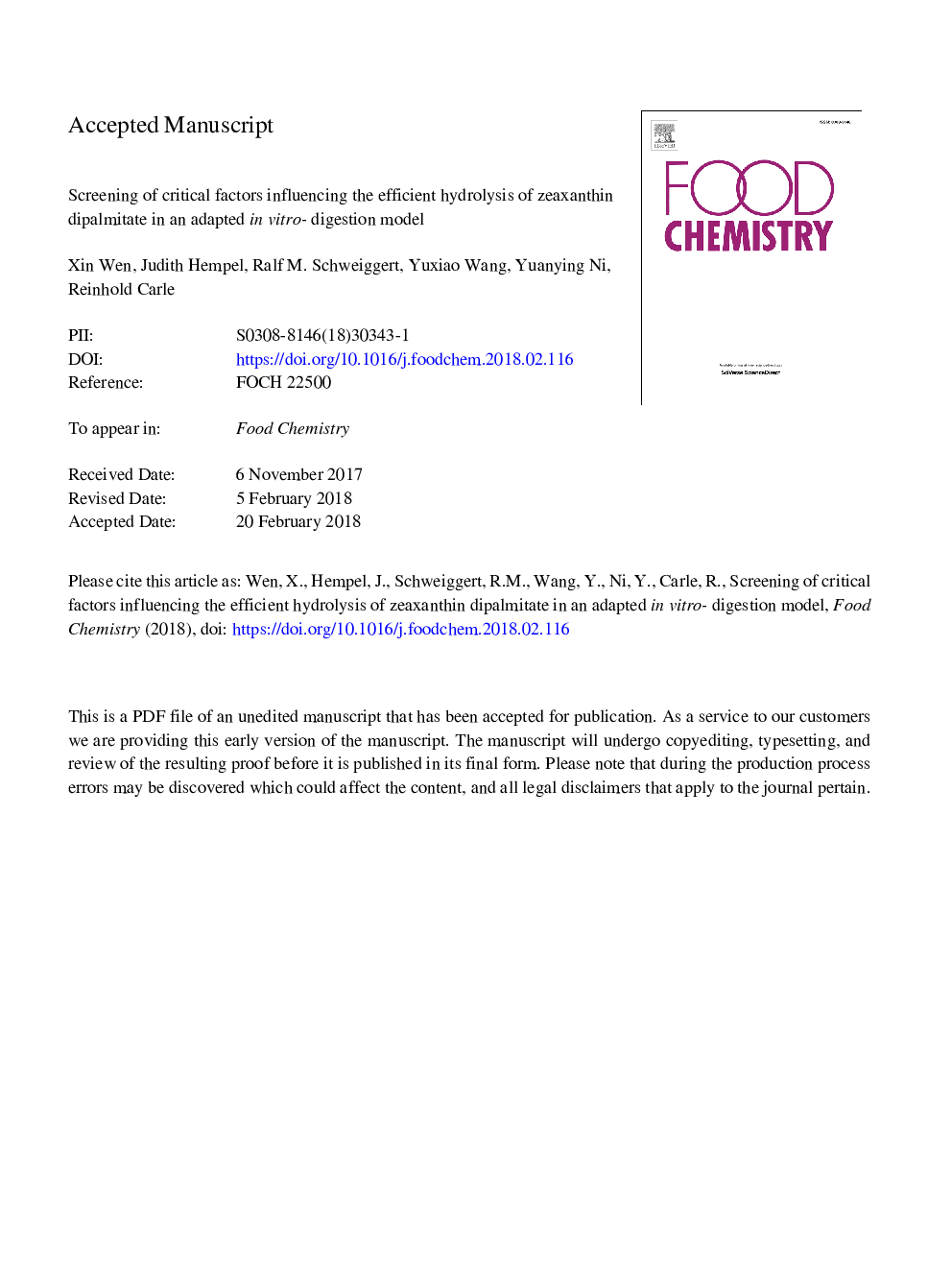| Article ID | Journal | Published Year | Pages | File Type |
|---|---|---|---|---|
| 7585162 | Food Chemistry | 2018 | 35 Pages |
Abstract
As hydrolysis of carotenoid esters is believed to be highly efficient in vivo, their insufficient hydrolysis in in vitro-digestion models, particularly, regarding zeaxanthin diesters, is a current issue. Therefore, in this study, several factors related to the enzymatic hydrolysis were investigated in an adapted version of the standardized INFOGEST in vitro-digestion model, using zeaxanthin dipalmitate (ZDP) as a substrate. The results showed that pancreatic lipase was able to hydrolyze ZDP, whereas carboxyl ester lipase (CEL) substantially contributed to ZDP cleavage. Replacement of commonly used porcine with bovine bile extracts and the substitution of coffee creamer for soybean oil at identical fat contents both significantly improved hydrolysis efficiency and bioaccessibility of total zeaxanthin to better mimic in vivo conditions. Thus, bile and lipids selection for in vitro digestion of carotenoid esters was crucial. The combined use of coffee creamer, pancreatin, CEL, and bovine bile led to the highest hydrolysis efficiency of 29.5%.
Related Topics
Physical Sciences and Engineering
Chemistry
Analytical Chemistry
Authors
Xin Wen, Judith Hempel, Ralf M. Schweiggert, Yuxiao Wang, Yuanying Ni, Reinhold Carle,
